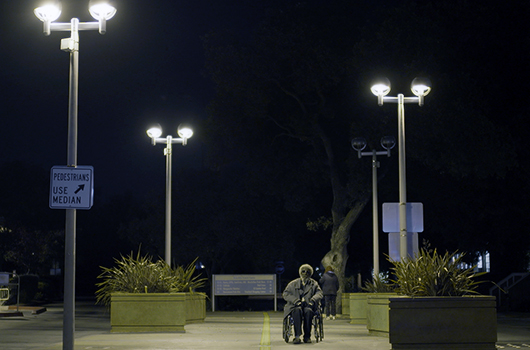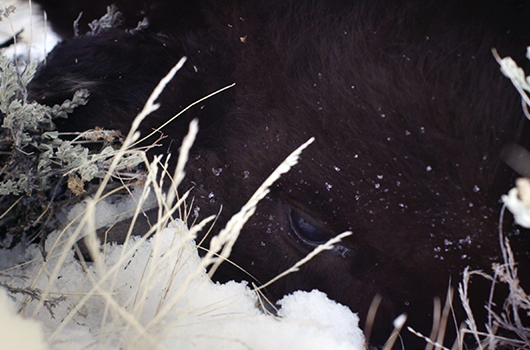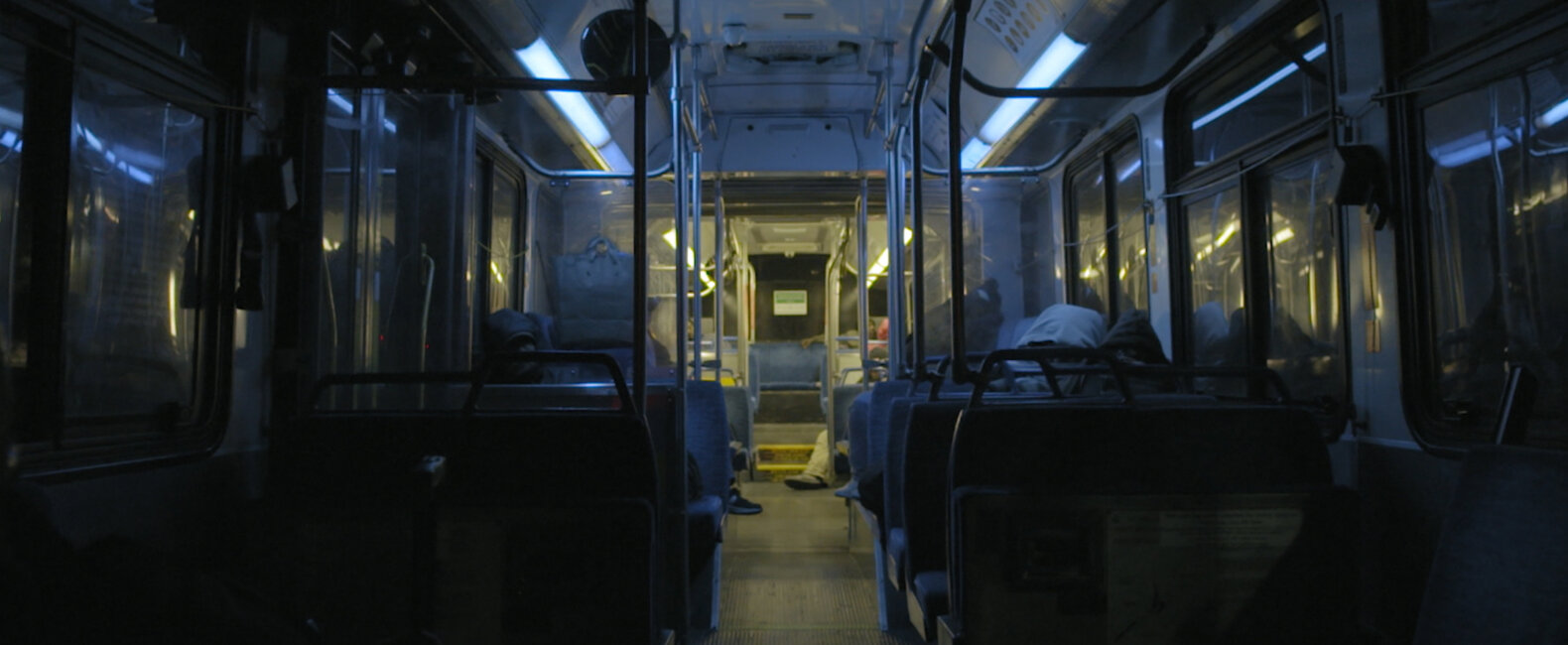Lately, there is a movement toward highly constructed, pristinely executed “nonfiction” films. These films capture real people, real places, and real stories with a heavy imposition of cinematic techniques. If you talk to these directors, they freely admit to directing events, doing multiple takes of supposedly spontaneous moments, and generally making up stuff. But then there are directors like Elizabeth Lo, an NYU grad who’s pushing her work in the opposite direction: messier, less narrative-driven, raw. Her films have been featured in Sundance Film Festival, Short of the Week and she’s been named as one of the ’25 New Faces of Independent Film’ by Filmmaker Magazine.
“I have this theory that in not so great films you can always see the strings,” Elizabeth told us. Her goal is to erase this “imposed structure” and take a more laissez-faire approach to directing a concept. It’s a bold, unpredictable vision that’s paid off for her so far, and she’s not taking a step back.
We recently talked with Elizabeth about her hands-off approach to documentary filmmaking.
Elizabeth Lo: One of the films that propelled me into documentary filmmaking was this film I made about zoos. Initially, I wanted to examine zoo culture. Why do people take their kids to zoos to gawk at animals? That’s a very strange thing. I wanted to look at it through an anthropological lens. But in the course of making the film, as I was talking to all these people, I discovered that 110 years ago the Bronx Zoo housed a human. An African pygmy was on exhibit in the monkey house in 1906. That kind of shocking revelation was a very compelling experience for me, and it brought together all these ideas I had about species discrimination, racial discrimination, and how all of that intersects. All of those connections came about spontaneously through the hard work of talking to lots of people about zoos. That process of discovery was so engaging to me that I decided I wanted to do documentaries.
Does documentary work come naturally to you?
I think so. I went to NYU’s film school because I wanted to write screenplays. But the documentary process was much more enjoyable to me. The spontaneous nature of it. I quickly discovered I have a much more reactive personality than a directive one. I don’t like to change the way people are behaving. I like to react to how they’re behaving, see how it unfolds, capture it in a way that makes sense to me. The world has so much more to offer than anything I could ever dream up on my own in a screenplay. There’s also the practical reality that if you want to make your living as a director, then you have to be able to work with actors. That’s never come naturally to me.

The world has so much more to offer than anything I could ever dream up on my own in a screenplay.
So even in your documentaries you don’t take a very direct-y approach?
I do stand back more, I think. I find that by being more passive, I’m forced to be more rigorous. I become almost compulsive when I’m filming. I film everything. I can’t stop. It’s almost to a fault, and it definitely makes the editing process more difficult. But I believe it yields better work. I’ve found that during those times when I do step in and try to make something happen, I don’t respond to the work as much as I do when I’m passive.
Have you found ways of lessening your effect on your subjects?
As much as I try to erase my presence in my films, I’m obviously very present and very close to people. In future work, I’d like to be even more explicit about my presence. But for a film like Hotel 22, I tried to lessen my presence as much as possible. I rode the bus for a month before actual production, acclimating myself to the people, acclimating them to me. And then I slowly started bringing larger and larger cameras with larger and larger lenses just to see how people would react. At first, people reacted a lot. People would tease me. And every night at least one person would yell. Understandably, I guess. But eventually what I found is that the size of your camera doesn’t matter. By the time I was using a huge camera with a tripod and sandbags, people’s reactions to me were exactly the same as when I was using a DSLR and a tiny lens. A lot of those people had bigger things to worry about than my camera.
What do you think of this move toward hybrid work — nonfictional subjects that are highly crafted and directed, sometimes even invented?
Well, even in my work — even in a film like Hotel 22 that is completely observational — it is all still highly constructed just in terms of editing, framing, and the way my camera affects how people behave. So I think this whole move toward hybrid work is really fascinating. It’s elevating the documentary field in a way. But I also feel that — and this is just an instinct, not a fully formed idea — rather than pushing nonfiction to be as clean and constructed as fiction, we could also push it the other way: we could make work that is messier. Work that is less constructed. Work that feels more visceral and doesn’t follow a linear story arc.
Is that what you were going for with Hotel 22?
In a way. I first approached that film from a formal place. I was experimenting with form as a filmmaker: How do I tell a story that doesn’t require verbal exposition? How do I find a space or thing in the real world that I can explore filmically and that people will understand even if I’m not relying on interviews or those story tropes that most documentaries rely on?When I was living in New York, I saw public transportation as this place where classes and races collide, where they’re forced to be in the same space for a set amount of time. I was fascinated by that, and I tried to find an equivalent on the West Coast. So I started researching buses and bus stories, and that’s how I found the Hotel 22 phenomenon.
The next film I made also came from a formal place. Bisonhead. It’s about a family of Native Americans going to Yellowstone to hunt bison. The form I was interested in there was following an action from the beginning to the end. A hunt has a built-in structure to it, which is why I was drawn to it as a topic.
So you have a form in mind first and then you find a subject?
That’s how I’ve approached things so far, yes.
Do you try to avoid repeating a form? Would you ever approach a new subject through a form you’ve already tried?
I feel an impulse to push myself further. With, say, Hotel 22, what I did there was very observational filmmaking; but now I want to push myself beyond that. I’m working on a sort of sequel to it that also uses a bus as a space, as a vehicle for examining social inequities in America. On this bus, children take an overnight journey to see their incarcerated parents in a faraway prison. They get to see them only once a year. So if I wanted to, I could use the same form as Hotel 22. Make it very observational again. But I feel the drive to go beyond that this time, to explore different modes. I’m not sure what that will be yet. Maybe something more archival. Maybe something very messy.
What makes good material?
It’s hard to tell. With Hotel 22, it was pretty obvious to me that the bus was an inherently dramatic environment with a lot of conflict between the riders, and between the passengers and the driver. But with Bisonhead, what I thought was good material turned out to be very different than what I was expecting. Which is exactly what’s great about documentary films. You plunge into the reality, you’re physically in it, and it’s often very different than whatever preconceptions or judgments you had about it. So the bison hunt, for example, was very modern. We rode in SUVs the whole time. It was not at all what I expected. And not what I wanted, honestly. I thought maybe it was boring because it didn’t fit with what I had conceived it would be. But in the end, that made the film stronger. It defies our stereotype of what a tribal hunt looks like.
But what makes material good? I don’t know. I don’t think you know for sure until the film is done.

Can you talk more about making messy work?
I have this theory that in not so great films you can always see the strings. You see how they’re working the narrative. You see how they’re imposing their structure on reality. That’s why I’m trying to push myself into more nonlinear filmmaking. I’m trying to push myself to stop seeing the world in this highly constructed way. Great films are compelling and you don’t really know why. The filmmaker is a master. You can’t see what they’re doing. They’re pulling strings you’re not aware of. It’s a mystery to you how, or even why, it works. Those are the films I admire the most, but I also have no idea how to achieve them. And maybe I’ll never know because the whole reason they work is because I don’t know how they work. They’re a mystery. I don’t think there’s a formula for that other than the talent and intelligence of the filmmaker.
I guess it’s art. And there’s never going to be a playbook for art.
Yeah. I don’t know.
What’s the best piece of advice you’ve been given?
A piece of advice? I’m not sure. For me, it’s been about working. Working is the cure to everything. The most important thing — and I wish I’d learned this earlier — is to make your own films where you have full responsibility and creative control. That’s the only way you learn. Being in a supportive role doesn’t teach you half as much as making your own film and having it flop or succeed. Work hard. Make things. That’s all there is to it.

















































































